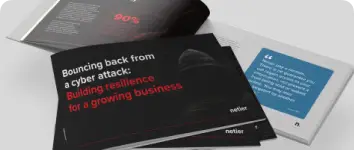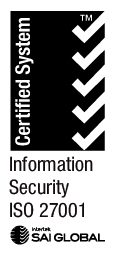IT budgeting has become a cornerstone of business success, yet many organisations struggle to align their investments in technologies with strategic goals. In 2025, IT spending in Australia is projected to reach $146.85 billion, an 8.7% increase from 2024, with the software sector leading the growth at a 13.4% rise to $45.85 billion, according to the CRN. This underscores the critical need for businesses to manage and align their IT budgets to maximise value strategically.
Netier, a leader in managed IT services and cyber security, has helped businesses nationwide navigate these challenges. This blog will guide you through the key components of strategic IT budgeting and offer actionable insights to align your IT investments with business objectives, optimise your technology spend, and drive measurable ROI. Keep reading to prepare your organisation for 2025 with confidence.
In Australia, IT spending is projected to reach $146.85 billion in 2025, an 8.7% increase from 2024

Source: CRN
Why IT Budgeting is More Critical Than Ever in 2025
IT is now in the driving seat in almost every facet of a business, no longer in the back seat as a support function. However, rising operational costs, evolving security concerns, and compliance requirements pressure IT budgets. By adopting a strategic approach, organisations can ensure their IT investments deliver measurable outcomes, from operational efficiency to improved customer experiences.
Strategic IT Budgeting
The Key Challenges:
- Rising Costs: IT budgets are expected to grow by 8% on average across Australia, driven by the need for advanced tools and services. Organisations must evaluate their spending to ensure they are aligned with strategic goals.
- Resource Demands: Day-to-day IT operations are now integrated with innovation to provide a greater overall perspective on the business. This challenge requires prioritising resources efficiently to maintain productivity while supporting growth initiatives.
- Cyber Security Threats: Strengthening security measures remains a top priority but consumes significant resources. Businesses must adopt advanced security tools and practices without overextending budgets.
Strategic Steps:
- Align IT with Business Objectives: Clarify your organisation’s strategic goals. Your IT budget should directly support these objectives, whether entering new markets or enhancing customer experiences.
- Conduct a Comprehensive Audit: Assess current IT assets, from hardware and software to vendor contracts. Identify gaps and underutilised resources to optimise your spending.
- Prioritise Investments: Categorise your budget into three areas:
- Run: Essential operations, such as infrastructure maintenance.
- Grow: Initiatives that enhance existing capabilities.
- Transform: Innovative projects that drive long-term growth.
- Incorporate Flexibility: Leverage rolling forecasts and scenario planning to adapt to market changes. This ensures that your budget remains agile and responsive.
- Monitor and Review: Establish KPIs to track ROI and make adjustments quarterly to ensure alignment with goals. Regular reviews help maintain focus and measure success effectively.

Key Challenges in IT Budgeting
IT budgeting can be a real challenge for many SMBs, often resulting in overspending and misaligned priorities. Below are some key areas where inefficiencies commonly occur and provide strategic actions to address them effectively.
Are You Overspending on IT?
Overspending on IT can stem from redundant tools, underutilised software, and excessive operational costs. Addressing these inefficiencies is critical to maintaining a streamlined and effective budget.
To optimise spending:
- Conduct Quarterly Reviews: Regularly evaluate IT expenses against usage and performance metrics to identify waste areas.
- Adopt IT Governance: Implement structured monthly or quarterly reviews to spot inefficiencies and recalibrate spending priorities.
- Optimise Vendor Contracts: Assess vendor agreements, renegotiate terms, or consolidate services to maximise value and reduce unnecessary expenditures.
Actionable Tips:
- Decommission Outdated Systems: Identify and retire obsolete systems that no longer contribute value.
- Invest in Automation Tools: Automate repetitive tasks to improve productivity and reduce manual intervention.
- Leverage Data Analytics: Use data-driven insights to uncover inefficiencies and inform strategic decision-making around IT investments.
Unlocking Hidden Value: How to Maximise Your Existing IT Investments
Often, businesses underutilise their current IT assets, leading to unnecessary expenses. To unlock value:
- Optimise Existing Tools: Leverage your software’s full capabilities. Unused features in cloud platforms could enhance productivity.
- Audit Licences: Regularly review licence usage to eliminate redundant costs.
- Enhance IT Governance: Scalable budgeting directs resources to the areas where they deliver the most outstanding value and impact.
- The Role of IT Governance: IT governance frameworks provide the structure to ensure technology spending aligns with organisational goals. Businesses can identify inefficiencies early by conducting monthly reviews and involving cross-departmental stakeholders.

IT Budgeting Best Practices for 2025
Build a Sustainable IT Budget
A sustainable IT budget balances immediate operational needs with long-term strategic goals. To achieve this, businesses should:
- Focus on ROI: Prioritise projects with measurable outcomes, such as increased customer satisfaction or enhanced operational efficiency. This ensures that investments directly contribute to the organisation’s objectives.
- Balance Costs: Categorise your budget across essential operational tasks (run), capacity-building initiatives (grow), and transformational projects (transform). This allocation allows for both stability and innovation.
- Invest in Cyber Security: With the growing threat of cyberattacks, robust security measures are indispensable. Allocate funds for advanced tools, employee training, and regular audits to safeguard your business.
Establish Clear Metrics
Success in IT budgeting requires defined metrics to evaluate performance. Key Performance Indicators (KPIs) such as cost savings, reduced downtime, or increased revenue growth help organisations measure the impact of their investments. Setting clear goals ensures that all efforts remain focused and aligned with broader business priorities.
Embrace Proactive Planning
Effective IT budgeting is a continuous process. Regularly scheduled reviews allow businesses to adapt to emerging technologies and shifting needs. Incorporating rolling forecasts and scenario planning ensures that budgets remain agile and responsive to changes, keeping the organisation prepared for future challenges.
Conclusion
Strategic IT budgeting is a vital tool for Australian businesses to navigate the challenges of 2025. By aligning IT spending with organisational objectives, companies can unlock value, address inefficiencies, and adapt to evolving technology demands while driving measurable ROI. The steps outlined in this article—from comprehensive audits to the strategic allocation of resources—offer a practical framework for maximising outcomes.
Netier’s expertise in managed IT services and cyber security equips organisations to implement these strategies effectively. By leveraging these practices, businesses can optimise costs and position themselves for sustained growth and resilience in an increasingly competitive landscape.

Netier Can Help Align Your Goals For ROI
Experience the benefits of strategic IT budgeting with Netier. As your dedicated IT partner, we help align technology with your business goals, ensuring every dollar delivers measurable value. Learn more about how our managed IT services can support your growth in 2025 and beyond.



